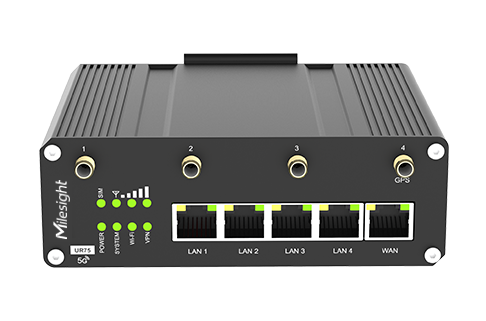Nowadays, in the rapid development of the Internet of Things, industrial cellular routers have been applied to various industries, such as electric power distribution, environmental protection, municipal administration, water conservancy, finance, and other industries. Besides, the industrial router can be seen almost everywhere in our daily life, such as vending machines, bus stations, outdoor advertising machines, and surveillance, etc. Today's 5G technology-based industrial cellular routers take applications to a higher level which were not possible to hit in the past.

Firstly, let’s think about, what is the difference between the 5G network and others?
1.The difference in network speed
The 1G network uses frequency division multiple access technology: FDMA
In the frequency domain, different signals are moved to different frequency bands, and the different signals do not overlap with each other.
The 2G network uses time division multiple access technology: TDMA
TDMA creates channels by assigning users non-overlapping time slots, and it was used in 2G cellular networks. The peak rate can reach 200kbps.
3G network adopts code division multiple access technologies: CDMA
Different users are distinguished by different coding sequences, that is, different waveforms. Seen from the frequency domain and time domain, they overlap each other. Based on spread spectrum technology, it has the characteristics of anti-interference, anti-multipath fading and good confidentiality. The peak rate can reach 2Mbps.
4G adopts Orthogonal Frequency Division Multiplexing (OFDM)
The channel is divided into multiple orthogonal sub-channels, each sub-channel uses different sub-carriers for modulation, and each sub-carrier is transmitted in parallel, thereby effectively suppressing the inter-symbol interference (ISI) caused by the time delay of the wireless channel. The peak rate is 100Mbps.
The multiple access technology of 5G control channel eMBB is the uplink and downlink CP-OFDMThe transmission method is MIMO with high throughput. CP means that after OFDM calculates the samples after the Inverse Fast Fourier transforming, the cyclic prefix is added in front, which can suppress the delay spread caused by the multipath effect and eliminate the inter-symbol interference ISI. The cyclic prefix can also change linear convolution into cyclic convolution, which greatly reduces the complexity of signal processing. The peak data rate is expected to reach 10 Gbps!
2. The difference in latency, reliability, and power consumption
The 5G network not only has a higher transmission rate, but also presents the characteristics of low delay, high reliability, and low power consumption in transmission. Low power consumption can better support future IoT applications. Low latency and high reliability can meet the needs of the internet of vehicles, for example, the Internet of vehicles requires transmission delays as low as 1ms, while traditional authentication and encryption procedures do not satisfy the ultra-high reliable and low-latency communication scenarios.
3. The difference in security
If 1G is for personal communications, 5G technology is for management applications in industry and society. Compared with the current relatively closed mobile communication system, if a 5G network has a trust problem during the open authorization process, a malicious third party will launch attack frequently on the network through the acquired network control capabilities, such as APT attacks, DDOS, Worm Malware Attacks. Fortunately, 5G adds a public key sent by the operator to the USIM card. The public key directly encrypts the user's SUPI (IMSI) into SUCI, and the network uses the private key to decrypt it, thereby protecting the user’s identity from eavesdropping attacks.
Secondly, what changes will the 5G industrial router bring to us?
- Smart Cities
Smart cities and municipal will use the information and 5G technology to enhance livability, workability, security, and sustainability. Energy costs will decrease, the traffic will flow faster, and safety will increase. The 5G industrial cellular routers will be there along the way providing encrypted faster data transmission channels to set up, manage, monitor, and secure all the connected devices in a smart city from sensors to IoT edge systems.

- Driverless Cars
Driverless technology must be refined to the point where it’s both reliable and flexible enough to handle a complex journey. Cars need to communicate with each other to avoid accidents and minimize congestion if there’s nobody on the driver seat. They will need to understand the sensors deployed on traffic lights poles, road signs, and the pavement to navigate more safely. And they need to get responses instantly, which is where low-latency and high reliability 5G industrial router can be offered.

- Robots
One of the best things about robots is their ability to do jobs that would be just plain dangerous for people. Thanks to the high-speed, low-latency, and high-density quality networks, robots equipped with 5G cellular router can be widely used in industrial welding, deep space exploration, and disaster response, their challenges can be more precisely achieved by robots.

Finally, what’s the advantage of Milesight 5G industrial cellular router?
1) Designed for unattended applications
The product is deemed to be compliant with EMC requirements level 4. The temperature resistance is from 70℃ to -40℃ due to the professional metal enclosure design that protects the device from moisture, lightning, and electromagnetic interference.
2) Massive data throughput capacityThe 5G industrial router supports higher real-time applications, accommodating more devices and low-latency networking, and greater data collection and forwarding capabilities.
3) Device access capability
There are rich industrial interfaces on the 5G technology-based router, which can support large amounts of data access in industrial control sites. Equipped with Gigabit Ethernet port POE power supply, making site networking faster.
Milesight UR75 5G Industrial Cellular Router: Specification>>>
Specification>>>









